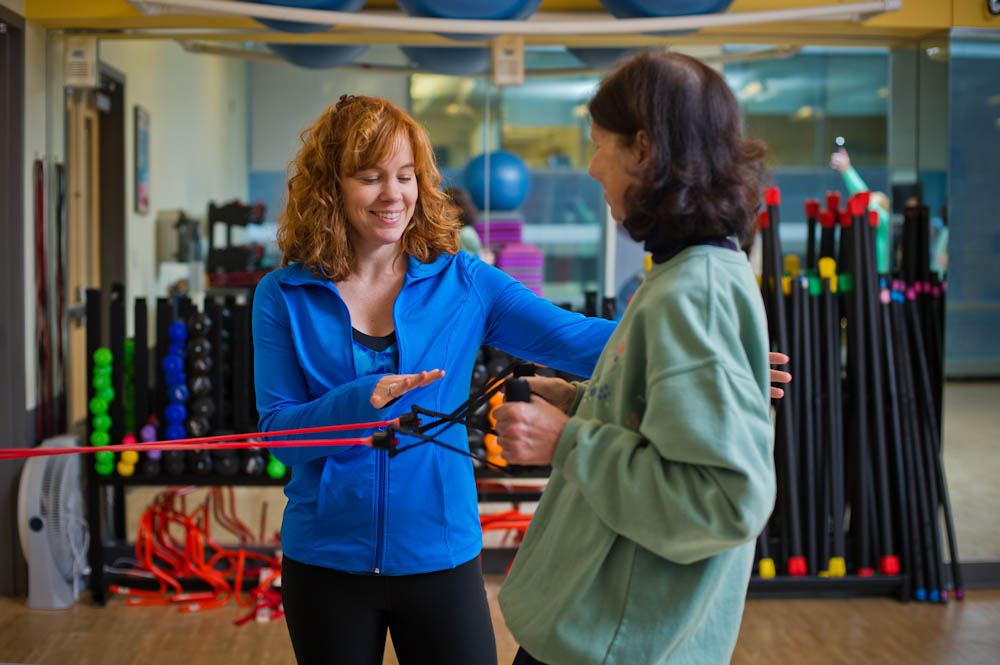Following radiation treatment or surgery to remove lymph nodes (lymphadenectomy), patients can develop lymphedema, a condition that involves abnormal swelling, usually in the arms or the legs, due to an accumulation of lymphatic fluids. This fluid buildup is caused by blockage or removal of lymph nodes or lymph vessels.
Lymphedema is often associated with breast cancer patients, but can result from treatment of other cancers, such as melanoma, prostate, or advanced gynecological cancer.
In addition to discomfort, lymphedema can also lead to infection, as the fluid buildup can increase bacteria growth. Pay attention to signs of infection, including pain, heat, swelling, rash blistering, redness, and fever. If you notice these symptoms, call your physician immediately.
Below are some ways to prevent infection and manage lymphedema symptoms that arise:

Infection prevention techniques:
- Be sure to keep your skin clean and moisturize daily.
- Exercise when possible. A physical therapist can help you determine what types of exercise your body can handle. Read more about how to get started on an exercise routine during cancer treatment.
- Avoid injury (cuts, sunburns, and insect bites) and wear gloves for gardening or cleaning.
- Avoid injections and blood pressure readings in the surgery site, or in the area that is affected by lymphedema.
Lymphedema management tips:
- Do not lift heavy objects with an arm affected by lymphedema and avoid continuous circular motions, like mixing.
- Elevate the limb above heart level as often as possible.
- Avoid extreme temperature changes when bathing or alternating between ice packs and heating pads.
- Avoid constriction. Wear loose clothing, do not wear tight jewelry or elastic bands around affected fingers or arms.
- Maintain ideal weight and a diet rich in protein and low in salt. Read more about how patients can keep a healthy diet.
If lymphedema is caused by infection, a doctor can prescribe antibiotics. If not, mechanical compression sleeves and stockings can prevent further accumulation of fluid in the affected limb. A trained therapist can also introduce manual lymphatic draining, if necessary.
For more information on lymphedema prevention, management, and treatment visit Dana-Farber’s resources for coping with lymphedema.

I am a Certified Manual Lymphatic Drainage (MLD) Therapist. Please encourage cancer patients who are at risk for lymphedema to get regular MLD Massage. It is a therapeutic method of preventing lymphedema and it feels good!
Avoid constriction? What about compressive sleeves for women who have lymphedema in their arms from lymph node removal due to breast cancer surgery or radiation?
Liz,
Great point about MLD, but one note on your other point: there is a difference between ”constriction” and ”compression.”
This article recommends avoiding ”constriction” — anything that impairs/reduces circulation around a certain point. Like a too-tight waistband or even a ring on a finger that’s too small (i.e., in the case of hand/arm lymphedema). On the other hand, ”compression” is an even pressure over a greater area that has a more gentle affect on circulation and helps prevent fluid accumulation.
Personal experience: I’m a guy with lymphedema in both legs. If I wear socks that have a tight band at the top, it constricts the area below and I get fluid build up. But, when I wear compression socks (that don’t pinch at the top) my legs are almost free of excess fluid.
Just wanted to clarify. 🙂
Liz, I developed leg lymphedema after uterine cancer and went to a MLD therapist who provided me the relief that I needed! The issue I encountered was that my medical team didn’t know why my leg was so swollen. After approximately three months of pain, I saw my Radiologist who mentioned Lymphedema. I follow the recommendations of my therapist to help me manage my condition. Wearing compression garments, daily excerise and a good diet are essential for long term control .Compression garments are a must for air travel. I am not convinced that the medical community is familiar with signs of lymphedema or infections caused by it. I recently had the sudden onset of Erysipelas and was diagnosed as having Shingles. It took almost 2 very painful months for the infection to leave. I later discovered that I should have been on antibiotics immediately and that the infection could have developed into a much larger medical problem. I have had two separate episodes of this particular infection and now well aware of what I need to do. As a cancer patient, I wish that I had been provided information on lymphedema and where to obtain proper treatment.
I DEVELOPED LYMPHEDMA AFTER RADIATION I WEAR A COMPRESSION SLEEVE & GLOVE…..MY ARM IS FINE I HAVE HORRIBLE NUMBNESS & BURNING IN MY HAND WHAT CAN I DO TO ALLEVIATE THIS PAIN
Dear Barbara —
I am so sorry to hear about your recent trouble. If you have not already, please make sure you bring up these issues with your physician or care team.
You may want to check out this information on how to cope with lymphedema as well as these steps to help alleviate symptoms of neuropathy.
There is also this recent presentation that spoke about managing symptoms of neuropathy.
I hope this is helpful and wish you all the best!
Can you add Occupational Therapists as someone who also can help with determination of exercise?
Where do you find certified MLD therapists?
Dear Mary —
Thank you for connecting with us. We have included below a list of some lymphedema resources that may be able to provide some assistance with finding a therapist:
National Lymphedema Network
800-541-3259
http://lymphnet.org
Information Services of the National Cancer Institute
800-4-CANCER Y-ME hotline: 800-221-2141
http://www.y-me.org
Greater Boston Lymphedema Network
781-894-2309
Brigham & Women’s Hospital
617-732-5304
Circle of Hope Lymphedema Foundation
203-758-6138
http://www.lymphedemacircleofhope.org
We hope this is helpful. Wishing you all the best.